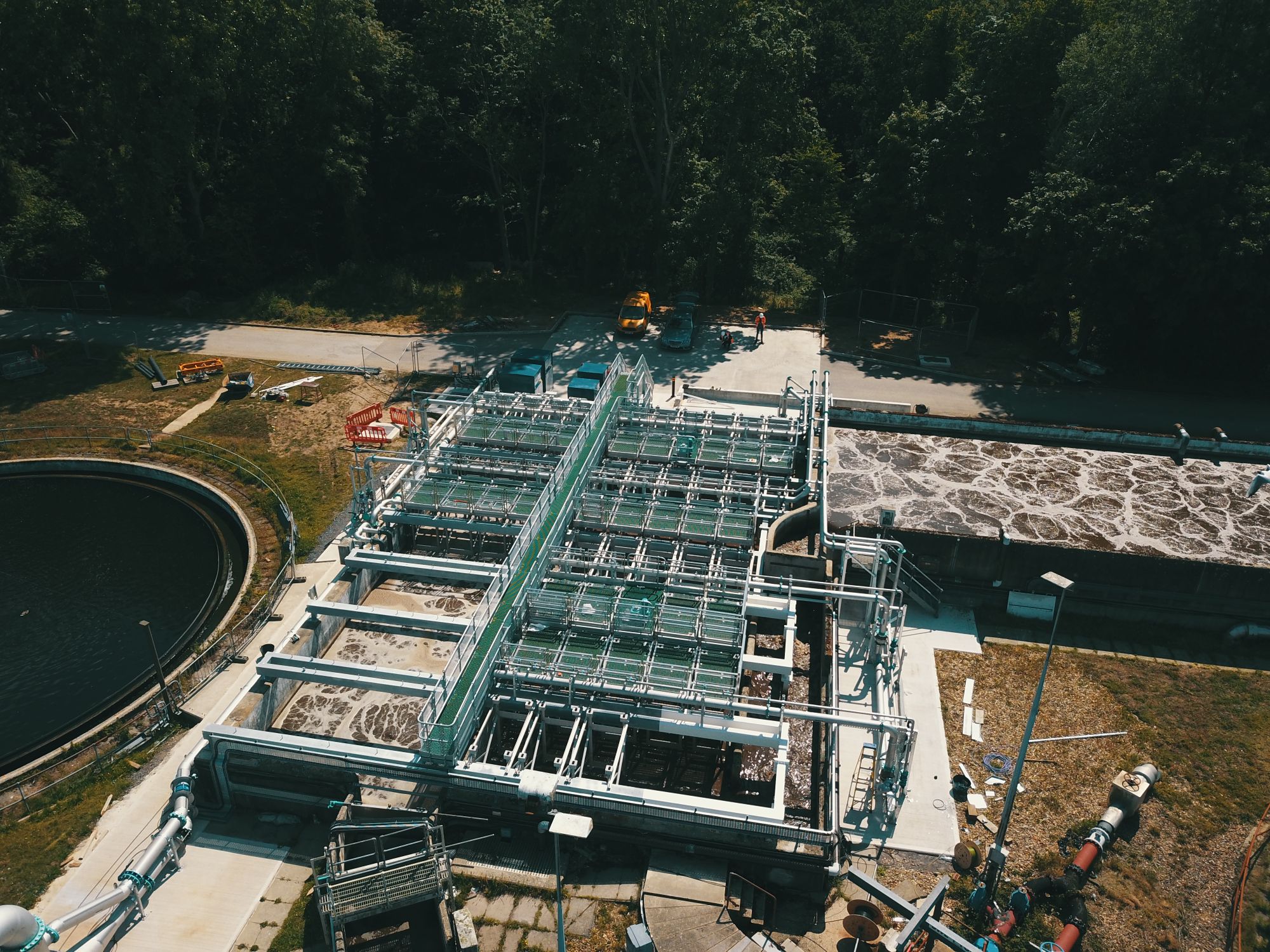UK Largest MABR System

July 30, 2025
Trant were responsible for the installation and commissioning of an Integrated Fixed Film Aerated sludge (IFAS) system for Wessex Water. It is the largest Membrane Aerated Biofilm Reactor (MABR) system in the UK.
The IFAS treatment process combines conventional activated sludge and biofilm technologies in one reactor. While an IFAS system will vary in components, a typical IFAS configuration is similar to that of an activated sludge plant, involving introducing biomass carriers into specific zones within the activated sludge process.
This setup results in two different biological populations that act synergistically. The mixed liquor suspended solids (MLSS) degrade the majority of the organic load, and the biofilm establishes a strong nitrifying population that enables the oxidation of the nitrogenous load. Biofilm processes enable the anaerobic, aerobic and anoxic zones to exist together in one stage, and IFAS systems enable the additional biological population to be on a fixed surface, which means it’s no longer necessary to increase the suspended growth population.
Scope of work included:
- Installation and commissioning 50No. MABR modules into an existing anoxic/contact zone.
- Installation of a process pipework and steelwork substructure by @Woodhams Group to support the modules frames and walkways - This involved a complex flow diversion to allow the anoxic/contact zone to be drained for the steelwork installation
- Installation and commissioning of 2No. vertical shaft mixers
- Installation & commissioning of 4No. Blowers (2No. Process, 2No. Scour Blower) - each in a duty standby arrangement.
- Installation of process instrumentation Inc. ammonia monitors, Flowmeter, and pressure instruments. etc
- Installation and commissioning of new MABR MCC (inc steelwork and Kiosk) and communications panel.
- Replacement of the existing diffuser heads in the contact zone
Benefits of using this system include:
- Can be installed into existing aeration lanes, which can be beneficial to sites that have minimal space for new plant.
- improved nitrification as compared to simple suspended growth systems due to combining the aerobic, anaerobic and anoxic zones and increasing the sludge retention time
- Faster restoration of system nitrification due to the large mass of nitrifiers on the fixed film
- Increased process stability
- Possible improvements and reduced variation in the Sludge Volume Index (SVI)
- Reduced production of sludge
- Enhanced denitrification processes
- Additional biomass to improve the performance of nitrifying plants and help non-nitrifying plants nitrify
- Resistance to organic and hydraulic shock loads
- High levels of efficiency for a large range of wastewater
- Increased capacity of activated sludge systems within the same tank volume


